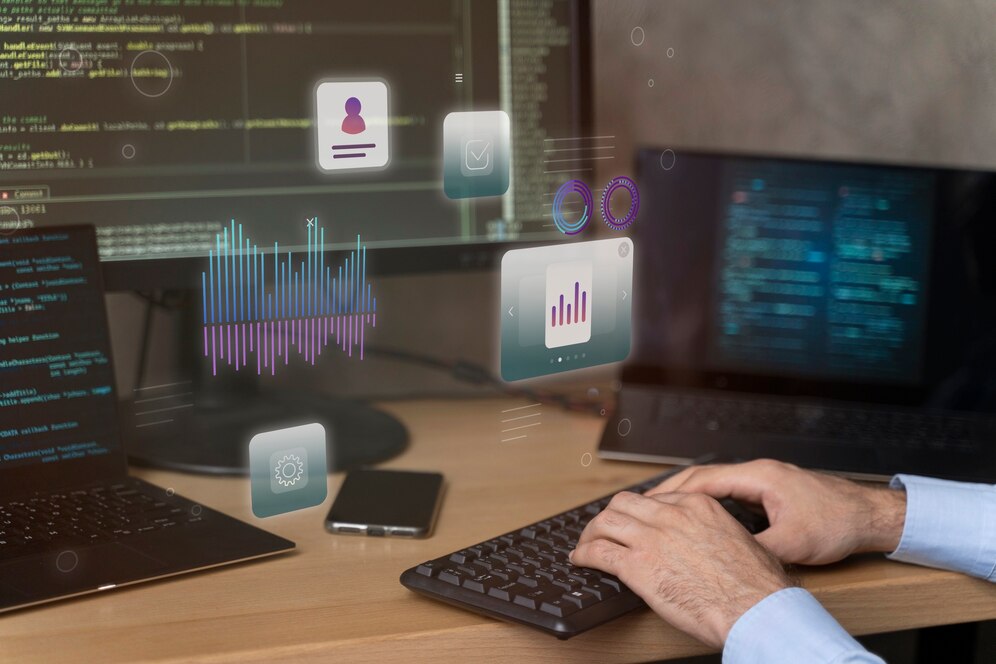
Chapter 1: Using Python to Understand Data Science
Data science is the application of diverse techniques and algorithms to extract knowledge and insights from both structured and unstructured data. Python is a great option for data science projects because of its abundance of libraries and versatility. The principles of data science and the applications of Python for tasks like data cleansing, data manipulation, and exploratory data analysis (EDA) are covered in this chapter.
Chapter 2: Examining Python Data Analysis Libraries
Numerous data analysis libraries are available for Python, each addressing a distinct component of the data science workflow. We will explore well-known libraries like pandas, scikit-learn, and NumPy, talking about their features and applications for data processing, machine learning, and numerical computation. Furthermore, we will investigate the relevance and usability of these libraries in the context of software development billing.
Chapter 3: Using Python to Visualise Data
An essential component of data science is data visualisation, which makes it possible for analysts and stakeholders to more successfully extract insights from data. Matplotlib, Seaborn, and Plotly are just a few of the robust visualisation tools that Python offers, allowing users to create engaging and educational visualisations. This chapter will cover the many kinds of visualisations and how to create them using Python, with specific examples from the field of billing software development company
Chapter 4: Using Python to Analyse Billing Data
A significant amount of data is produced by billing software development firms about transactions, invoices, and customer interactions. Python can be used to evaluate this data and derive insightful information that will enhance decision-making and business operations. We will show you how to use Python to analyse billing data in this chapter, including methods for finding trends, patterns, and anomalies.
Chapter 5: Machine Learning and Predictive Analytics
Businesses may now forecast and decide using past data thanks to machine learning algorithms. The scikit-learn library for Python offers an extensive collection of tools for creating and implementing machine learning models. This chapter will examine some machine learning methods and algorithms and analyse how they are used in the creation of billing software and other sectors.
Chapter 6: Using Python for Business Intelligence
Using data analysis tools and processes to support business decision-making is known as business intelligence (BI). Python can be used to automate report generation, data processing, and insight visualisation in business intelligence workflows. This chapter will cover how Python may be used in billing software development firms for business intelligence (BI) purposes, giving them a competitive advantage through data-driven decision-making.
Chapter 7: Hiring Data Science Projects in India with Python Developers
India has become a centre for gifted Python developers, providing a large pool of knowledgeable experts at affordable prices. The advantages of hire python developer in india for data science projects—especially for software development companies—will be discussed in this chapter. We'll go over things like technical proficiency, communication abilities, and cultural fit to take into account when hiring engineers. We'll also offer advice on how to run remote teams efficiently.
Chapter 8: Case Studies and Success Stories
This chapter will look at actual case studies and success stories of software development firms that have successfully used Python for data science projects and are invoicing clients. These case studies will illustrate the difficulties encountered, the strategies put in place, and the results obtained, highlighting the observable advantages of employing Python for data analysis and visualisation in the field of billing software development.
Chapter 9: Upcoming Patterns and New Technologies
Data science is a field that is always changing, with new tools and methods appearing quickly. This last chapter will examine data science trends and new technologies and how they will affect the field of billing software development. We'll talk about things like deep learning, big data analytics, and artificial intelligence to have a better understanding of where data science using Python is headed.
Chapter 10: Data Science Ethical Considerations
Although data science presents enormous potential for economic expansion and innovation, it also brings up significant ethical issues. This chapter will examine the ethical aspects of data science and how they relate to software development organisations that use Python for data analysis in their billing processes.
- Data security and privacy: Must be given top priority by billing software development companies since they have access to substantial amounts of consumer data. To protect sensitive client data, Python developers must abide by industry norms and laws like the General Data Protection Regulation (GDPR).
- Fairness and Bias: If data science algorithms are not properly developed and applied, they may unintentionally support discrimination and bias. Python programmers need to be on the lookout for and aggressive in eliminating bias from their models, particularly in domains where equality and justice are critical, like billing software.
- Accountability and Transparency: Ensuring accountability for algorithmic outcomes and fostering trust with stakeholders both depend on transparency in data science procedures. Python developers should promote accountability and transparency in software development billing by clearly explaining model outputs to stakeholders and documenting their processes.
- Data Governance: To manage the quality, integrity, and accessibility of data, effective data governance procedures are necessary. To guarantee that corporate standards and regulations are followed and to build strong data management processes, Python developers must collaborate closely with data governance teams.
- Responsible AI: It's critical to give responsible AI practices a priority as artificial intelligence (AI) is progressively included into data science workflows. Python programmers ought to think about how their algorithms might affect society and take precautions against dangers like algorithmic bias in software development and job displacement.
Chapter 11: Ongoing Education and Career Advancement
In the quickly developing subject of data science, new methods, instruments, and technological advancements are frequently introduced. In the context of billing software development, we will talk about the value of ongoing education and professional growth for Python developers in this chapter.







